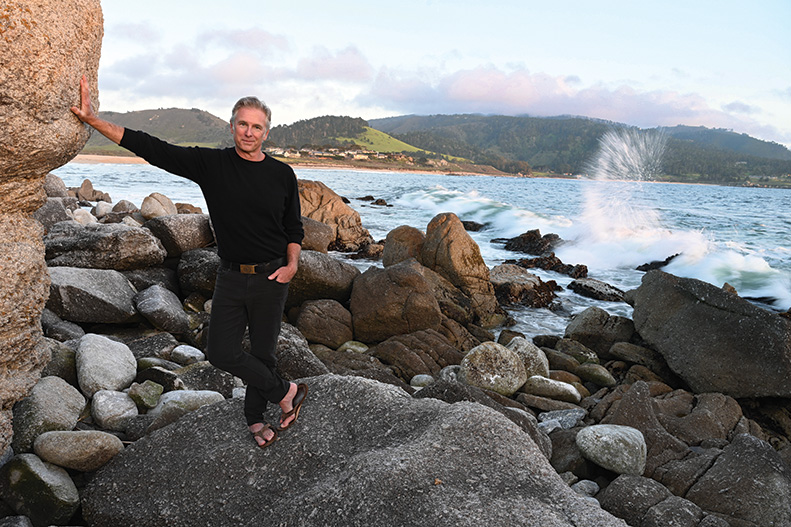
Population density maps of the United States, South America, Africa and Australia all show the same trend: Humans tend to concentrate on the edges of landmasses—at or near the water. That’s really no surprise, and there’s a reason that a piece of waterfront property commands a significantly higher price point than a comparably sized, landlocked parcel. Being close to or in water instills a sense of well-being. Author Dr. Wallace J. Nichols’ 2014 book, “Blue Mind: The Surprising Science That Shows How Being Near, In, On or Under Water Can Make You Happier, Healthier, More Connected and Better at What You Do,” posits a scientific explanation for that phenomenon.
“I’ve understood it innately my whole life,” Nichols says. “As a child I was shy and introverted and preferred being in or under the water. You don’t stutter there. My life sort of aligned to this idea. I didn’t call it anything…it was just my choice of things to do.” Later in life, as a scientist whose interests centered around aquatic ecosystems and ocean conservation, he went looking for a book on how water affects us. He thought there must have been some work done correlating how water influences our brains, much as music does. “I couldn’t find one, so I tried to convince other people to write it.” One of those writers was British neurologist Oliver Sacks, whose book, “Musicophilia,” “investigates the power of music to move us, to heal and to haunt us,” according to its publisher’s notes. “I approached him with my concept. He replied, ‘It’s a fine idea. You do it.’ At that moment, something I thought I’d like to read turned into a five-year project.” “Blue Mind” made The New York Times Best Seller list.
Nichols is an affable, witty and whimsical fellow and refers to himself (only half-jokingly) as Chief Evangelist for Water (CEH2O) at The Blue Mind Movement. Since his book’s publication he has lectured to groups around the world. “Prior to the pandemic, the ‘Blue Mind’ concept had taken a bit of explaining,” he says, “but during lockdown it made sense to people.” Those were dark times. “Everyone was dealing with stress and chaos, we were losing all kinds of things left and right, whether it was the loss of a loved one, one’s health, a career or dreams. Interacting with water in myriad ways helped people to cope,” he says. “It was no coincidence that swimming pool, boat and hot tub sales went through the roof during that period. It became clear to people that when beaches were closed—as they were at the beginning of the pandemic—they realized the role water plays in their lives for health is nonnegotiable.” One anecdote speaks volumes about the power of water. “When I do presentations, I’ll announce to the audience that I’ve asked my team to remove all water bottles from the room and lock the doors. Then I’ll say, ‘You’ll get a drink of water in three hours.’ Every mouth in the room goes dry instantly.” Then he says that he doesn’t really have a team and that the doors are open. But the point is made.
Water as a symbol has deep meaning in society, a fact that has not gone unnoticed by the advertising industry. “Marketers use water in ads to sell all kinds of products. It represents well-being, security and contentment. Showing people on a balcony overlooking water implies you’ve made it in life, or jumping into a pool suggests health and well-being. The signal of water goes straight to your subconscious mind.”
Now a Carmel resident, the author was himself put to the test of how his concept of mental balance would hold up when his family’s Davenport home was destroyed in a wildfire. “That took the hypothesis out of the theoretical realm and literally to my doorstep. I was challenged in the biggest way I’ve ever been. I felt like someone was saying, ‘Hey water guy, let’s see if your ideas hold up’…and there’s irony to that as well. I’ve been thinking about and advocating for water my whole life and then I have this dramatic experience with fire. What I ended up doing was applying my theory to my own life, and it definitely helped.”
For more information about Wallace Nichols and “Blue Mind,” please visit www.wallacejnichols.org.